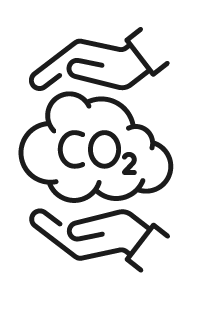Description

What is NIST's carbon removal, capture, use, and sequestration program?

Even with the transition to renewable energy sources, carbon dioxide removal (CDR) and carbon capture, utilization, and sequestration (CCUS) are critical technologies needed to reach U.S. climate goals. Carbon capture (CC) at point sources is vital for mitigating emissions from power and industrial plants. CDR, focused on capturing carbon dioxide from the atmosphere (Direct air capture, DAC) or ocean (marine CDR) and durably storing the CO2, can address legacy emissions that have built up in the atmosphere over the past century. While CDR can provide a net negative emissions capability to help offset industries difficult to completely decarbonize, CDR is in the very early stages of technology development and deployment.
NIST, in coordination with industry and other agencies, is developing benchmark materials, measurements, data, and models to accelerate innovation in and validate performance of materials and technologies for CDR and CCUS. Our work contributes to the development and commercialization of new carbon mitigation technologies, necessary for the world to limit global temperature rise to less than 2 degrees Celsius.
NIST Low-Carbon Cements and Concretes Consortium
The consortium is bringing together stakeholders to accelerate the adoption of low carbon cements and concretes. One focus is to develop measurement solutions and standards to improve measurement confidence, establish measurement traceability, and enable comparability in the measurements to quantify carbon and carbonate in low carbon cements and concretes.
For more information or to apply for a membership:
Visit the consortium page or contact lowcarbonconcrete [at] nist.gov (lowcarbonconcrete[at]nist[dot]gov).
A community of knowledge
Our work is informed by stakeholders from industry, academia, and other federal agencies. The community has confirmed the need for validation of:
- New materials and technologies
- Scalable solutions
- Global carbon accounting
We are accelerating achievement of these critical outcomes with a current focus on reference methods, materials, and data for:
- Sorbents for direct air capture
- Low carbon cements and concretes
- Next generation seawater reference materials
Major Accomplishments
A Review of Current Practice for Life Cycle Assessment of Cement and Concrete
July 2024
Author(s): Josefine A. Olsson, Sabbie Miller, Joshua D. Kneifel
A Synthetic Methodology for Preparing Impregnated Grafted Amine-Based Silica-Composites for Carbon Capture
September 29, 2023
Author(s): Charlotte Wentz, Zois Tsinas, Amanda L. Forster
Improved Apparatus for Dynamic Column Breakthrough Measurements Relevant to Direct Air Capture of CO2
May 23, 2023
Author(s): William Sean McGivern, Huong Giang Nguyen, Jeffrey A. Manion

